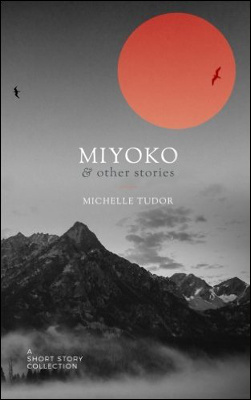|
by Michael Tsang

Michelle Tudor, Miyoko & Other Stories, Platypus Press, 2015. 72 pgs. Michelle Tudor's Miyoko & Other Stories is a highly accomplished collection of four short stories, all set in Japan. Tudor avoids clichéd representations of the country as "cool," running against the official "Cool Japan" campaign aimed at promoting the superficial consumption of Japanese technological and cultural products. Her understanding of Japan is amazingly perceptive, and her stories address the deeply intertwined paradoxes between young and old and urban and rural that have recently characterised the nation. The first story, "Hotpot," first published in Cha, addresses these paradoxes. The protagonist, Toshiko, is an old lady who goes to Tokyo by train every day to sell her farm produce. The freshness of her products attracts the loyal patronage of an office worker who shares the same first name as Toshiko's son. When her son proves too busy to celebrate her birthday in May, Toshiko finds solace by inviting the customer to her farmhouse for a birthday hotpot. Simple and heart-warming, the story suggests that human relationships should not be ignored in the hustle and bustle of big cities (represented by the son's busyness) and that a connection with the agrarian helps bond people together and forges affective, meaningful friendships. Each story in this collection is mapped onto one of the four seasons (a characteristic of much of Japanese culture). In "The Apple Orchard," the orchard symbolises the final element that gives an old man's life meaning, as he clings onto it in the summer heat as an expression of his dedication and attachment to his late wife. "Miyoko," the title story, turns eerie in the autumn mountains. The last story, "Distance," represents winter as it explores with a slight twist at the end how age tampers with one's distant memory. Two striking features of this collection are the use of elderly people as protagonists and the prominence of rural Japan. These traits explain why Tudor's Japan is very different from the one many of us know: the Japan experienced by the elderly is not necessarily defined by the vibrancy and glamour of big cities, but by cherishing the small pleasures and indulgences they still have, or manage to create, in their daily life and by renegotiating the relationship between their mind and body, between themselves and the younger generation and between mankind and nature. Tudor's stories are minimalist but intense: minimalist because there are no complicated plotlines or enigmatic characters, intense because there is often only one narrative that focuses sharply on a tiny aspect of a character's life. In "Hotpot," this narrative centres on the interaction between Toshiko and the office worker; in "The Apple Orchard," on the protagonist's devotion to the farm. Flashbacks are used to provide necessary background information, acting like a foil to comment on the ongoing narrative in the present, as the story "Distance" illustrates. Tudor has reduced her characters to their most elemental stories, and thus it becomes unnecessary to depict any other aspects of their daily lives. Within these narratives, all attention is given to describing what it feels like to live in those particular moments: the loneliness of selling vegetables in Tokyo, the happiness of knowing one's produce is highly valued by a customer, the bravery it takes to open up oneself to a stranger. Each story starts in medias res of a life, but also ends in medias res. When a story finishes, readers do not feel that they know the protagonists completely, but they can feel the characters' strongest impulses and how they live their lives. Despite these merits, one thing that prickled this reviewer slightly is Tudor's dialogue, which can be too blunt and does not always reflect the various inflections and honorifics of politeness embedded in the Japanese language. One such example can be found in the exchange between the office worker and Toshiko at the end of "Hotpot": "Hey Toshiko, look …" Given that sharing a hotpot is the first instance in which the two spend time together not as seller/customer but as acquaintances, the younger man would be unlikely to casually call out to Toshiko with the Japanese equivalent of "hey," nor would he address her using her first name. The way the characters speak should be as much a part of the Japan conveyed by the stories as the setting and characterisation, but unfortunately such linguistic sensitivity is lacking in this collection. This shortcoming reminds readers that these stories are a foreigner's representation of Japan. Tudor's use of unspecified third-person narrators clearly marks the distance between the characters and the narrative voice, and reading these stories is much like watching a Japan-themed play performed for a Western audience—the costumes, the sets and the characters are Japanese, but the words uttered are in English. This collection, then, exemplifies a provocative debate regarding the politics of translation and transcultural literature: are the stylistics of a language part of a culture that can be communicated through a foreign language? If so, how? If not, can the merits gained in translation or by rendering a culture in another language, balance out this limitation? My view is that it can, but only when you get story-telling as original and authentic as Tudor's. |